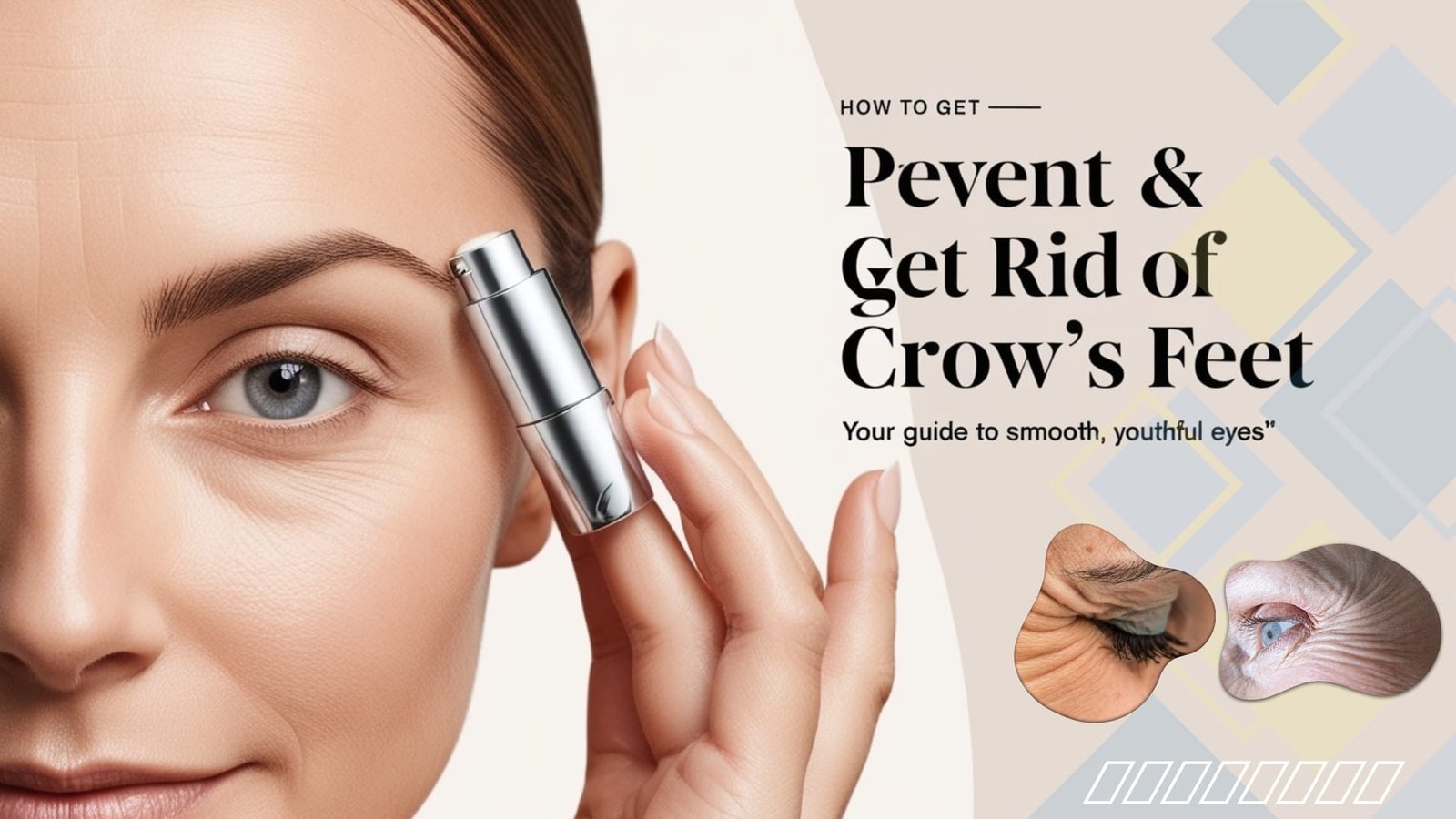Crow’s feet—those fine lines around the outer corners of the eyes—are a natural part of aging. However, they can appear prematurely and deepen over ti
Crow’s feet—those fine lines around the outer corners of the eyes—are a natural part of aging. However, they can appear prematurely and deepen over time. While some embrace these “laugh lines” as marks of experience, others seek ways to reduce or prevent them. This article provides insights into crow’s feet, their causes, and effective strategies for prevention and treatment.
Introduction to Crow’s Feet
Crow’s feet are often seen as a sign of a life filled with smiles and laughter. However, these wrinkles can also be a source of concern for those aiming to maintain youthful skin. By understanding their causes and exploring skincare techniques, it’s possible to manage and prevent these lines.
What Are Crow’s Feet?
Definition of Crow’s Feet
Crow’s feet are the fine wrinkles or lines radiating from the outer corners of the eyes, resembling a bird’s footprint. These “expression lines” appear more prominently during smiling or squinting.
Why They Appear Around the Eyes
The skin around the eyes is thin and delicate, making it more prone to early signs of aging. Loss of collagen and elastin, coupled with repeated facial movements, contributes to the formation of crow’s feet.
Common Causes of Crow’s Feet
1. Natural Aging Process
- Reduced collagen production and weaker skin elasticity lead to wrinkles over time.
2. Sun Exposure and UV Damage
- UV rays break down collagen and elastin, accelerating the aging process.
- Lack of sunscreen use exacerbates damage in the delicate eye area.
3. Facial Expressions and Movements
- Frequent squinting, smiling, or frowning causes repetitive muscle contractions, leading to permanent lines.
4. Environmental Factors
- Pollution, smoking, and toxins generate free radicals that damage collagen and promote wrinkles.
How to Reduce Crow’s Feet: Treatment Options
Topical Treatments
- Retinoids: Boost skin cell turnover and collagen production.
- Peptides and Collagen-Boosting Serums: Encourage firmer skin by enhancing elasticity.
- Antioxidants (Vitamin C and E): Repair damaged skin and reduce wrinkles.
Professional Treatments
- Chemical Peels: Remove dead skin layers for smoother skin.
- Laser Resurfacing: Stimulate collagen production with deeper skin renewal.
- Micro-Needling: Improve texture by promoting natural healing.
- Botox and Fillers: Relax muscles or add volume for a smoother appearance.
Home Remedies for Crow’s Feet
1. Cucumber and Aloe Vera
- Hydrates and soothes delicate skin, reducing fine lines.
2. Coconut Oil Massage
- Rich in antioxidants, coconut oil improves skin elasticity.
3. Egg White Mask
- Temporarily tightens skin and minimizes crow’s feet visibility.
4. Green Tea Bags
Prevention Tips for Crow’s Feet
Proper Sun Protection
- Apply sunscreen daily around the eyes.
- Wear UV-protective sunglasses to avoid squinting.
Hydration and Moisturizing
- Use hydrating eye creams with hyaluronic acid to retain moisture.
- Drink plenty of water to keep skin supple.
Gentle Eye Care Routine
- Avoid rubbing or tugging on the delicate eye area.
- Remove makeup with mild products to prevent irritation.
Reducing Facial Tension
- Use corrective eyewear to avoid squinting.
- Practice awareness of facial expressions to reduce strain.
Lifestyle Changes to Prevent Crow’s Feet
Healthy Diet for Skin Health
- Include foods rich in antioxidants, vitamin C, and omega-3 fatty acids.
Regular Exercise and Facial Yoga
- Improve circulation with exercise; tone muscles with facial yoga.
Quitting Smoking
- Smoking accelerates aging and damages skin’s collagen.
Stress Management
Choosing the Right Eye Cream
Key Ingredients to Look For
- Retinol: Increases cell turnover.
- Hyaluronic Acid: Retains moisture.
- Peptides and Antioxidants: Boost collagen and repair damage.
When to Start Using Eye Cream
Consistency in Skincare
- Regular application of eye creams and sunscreen is crucial for long-term results.
Myths and Facts About Crow’s Feet
Can Crow’s Feet Be Prevented?
- Complete prevention isn’t possible, but proactive care delays their onset.
Do Eye Exercises Help?
- While evidence is limited, eye exercises may improve muscle tone and circulation.
Risks and Considerations of Treatments
- Laser treatments or Botox may have side effects; consult a dermatologist for guidance.
Embracing Natural Aging
Aging is a natural and beautiful process. Crow’s feet are often a sign of a life well-lived, full of smiles and experiences. Embracing these changes can be empowering and reflective of inner beauty.
Conclusion
While crow’s feet are an inevitable part of aging, their appearance can be managed with the right approach. From professional treatments to natural remedies and preventive habits, there are numerous ways to maintain smooth, youthful skin around your eyes. The key is consistency and finding what works best for your skin type and lifestyle.
FAQs
1. What age do crow’s feet typically appear?
Crow’s feet usually begin appearing in the late 20s to early 30s, influenced by lifestyle and environmental factors.
2. Are crow’s feet only caused by aging?
No, sun exposure, facial movements, and environmental damage can also contribute.
3. Can natural remedies eliminate crow’s feet?
Natural remedies can reduce their appearance but are unlikely to eliminate them completely.
4. How often should I apply eye cream?
Apply eye cream twice daily—morning and night—for the best results.
5. Is it possible to completely prevent crow’s feet?
While you can delay their appearance, crow’s feet are a natural part of aging that cannot be fully prevented.
